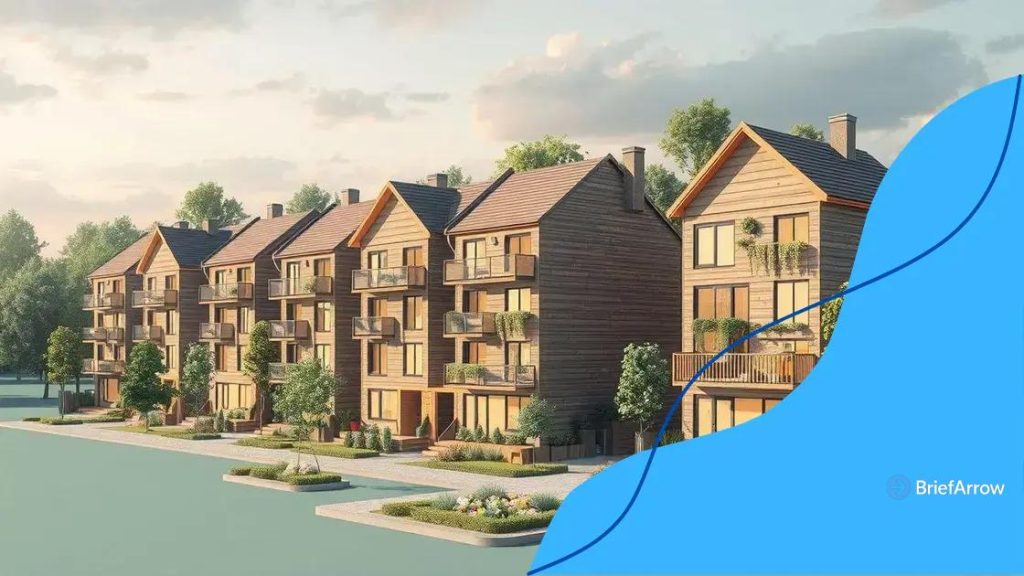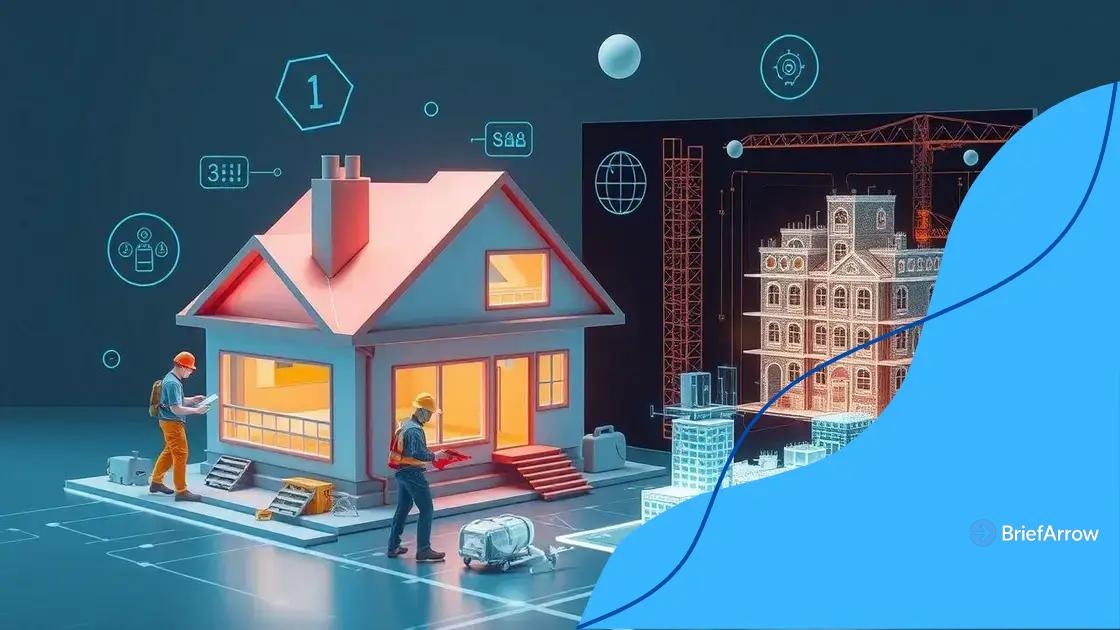Innovative solutions for affordable housing explored

Anúncios
Innovative solutions for affordable housing involve technological advancements, community-driven initiatives, and effective policy changes that collectively address housing shortages, ensuring accessibility and sustainability for all.
Innovative solutions for affordable housing are essential in today’s world where many struggle to find a place to call home. Have you ever wondered how new ideas can turn that around? Let’s delve into some exciting possibilities that can reshape our communities.
Anúncios
Understanding the affordable housing crisis
Understanding the affordable housing crisis is crucial for addressing the needs of communities around the world. Many individuals and families are struggling to find homes that fit their budgets without sacrificing quality of life. Let’s explore what factors contribute to this pressing issue.
Key Factors Contributing to the Crisis
The crisis stems from several interconnected elements. These elements include rising costs, stagnant wages, and an increase in population. Each factor plays a significant role in making housing less affordable.
- Increased demand for housing in urban areas
- Insufficient construction of new affordable units
- Inflation and soaring material costs
- Low-income and minimum wage challenges
Another important aspect of the affordable housing crisis is the impact of zoning laws. These laws sometimes limit the construction of affordable homes. When only luxury apartments are built, it leaves many behind. Responsible planning is key to finding solutions that benefit everyone.
Anúncios
Emerging trends show an effort to improve the situation. Communities are embracing innovation in designing affordable housing. For example, some cities are beginning to allow tiny homes or modular builds, which can offer a practical response to the housing shortage.
Community Engagement and Solutions
Community engagement plays a vital role in addressing the crisis. By involving residents, solutions can be tailored to meet specific needs. This approach encourages collaboration between local governments, developers, and residents.
- Encouraging public input in development projects
- Creating affordable housing committees
- Launching local housing initiatives
- Promoting diverse housing options for all income levels
In summary, understanding the affordable housing crisis involves recognizing the various factors that exacerbate the issue. From economic elements to community engagement, all pieces matter. Innovative approaches and responsible planning are essential for creating housing solutions that truly work.
Creative design approaches for housing
Creative design approaches for housing can transform the way we think about homes. By embracing innovative strategies, communities can address the challenges of affordable housing while improving the quality of life for residents. Let’s explore some of the most effective and exciting design solutions.
Modular Homes
One of the most promising approaches is the use of modular homes. These houses are built in sections, or modules, in a factory setting, then transported to the building site. This method offers several benefits. For example, modular homes:
- Reduce construction time significantly
- Are often more cost-effective than traditional building methods
- Allow for customizable designs that meet various needs
- Minimize waste due to precise manufacturing processes
Another creative idea is the concept of community micro-housing. These small, efficient living spaces are designed to maximize comfort and functionality. They often feature:
- Shared community spaces to foster connections
- Innovative storage solutions to save space
- Sustainable materials that promote eco-friendliness
In addition to these options, converting existing buildings into residential spaces is gaining popularity. Adaptive reuse can breathe new life into underutilized structures. Old warehouses, schools, or churches can be transformed into beautiful living spaces that maintain their historic charm while serving current needs.
Green Building Techniques
Incorporating green building techniques is another creative design approach. These practices not only reduce environmental impact but also lower living costs. Key elements include:
- Energy-efficient appliances and systems
- Use of renewable energy sources, like solar panels
- Eco-friendly materials that have a smaller carbon footprint
Ultimately, creative design approaches for housing are about finding solutions that cater to people’s needs while addressing the pressing issue of affordability. By exploring these innovative options, communities can build a future where everyone has access to quality homes.
Technological innovations in construction

Technological innovations in construction are revolutionizing the way we approach affordable housing. With advancements in technology, builders can create homes that are not only more affordable but also faster to construct. Let’s explore some of these exciting developments.
3D Printing in Construction
One remarkable innovation is 3D printing. This technology allows for entire homes to be printed layer by layer using concrete or other materials. The benefits of 3D printed homes include:
- Reduced labor costs due to less manual work
- Faster construction times, often completed in days
- Less material waste, making it more environmentally friendly
- Customizable designs tailored to individual needs
Furthermore, 3D printing can significantly lower the cost of building materials. This means that more people can afford to own their homes.
Building Information Modeling (BIM)
Another important advancement is Building Information Modeling (BIM). BIM enables architects and builders to create detailed digital models of buildings before construction begins. This technology helps in various ways:
- Improves collaboration between different teams working on a project
- Allows for better planning and resource management
- Identifies potential issues early, reducing costly delays
With BIM, developers can effectively plan affordable housing projects that meet community needs while staying within budget.
Additionally, smart building technologies are enhancing the efficiency of homes. These technologies include features like smart thermostats, automated lighting systems, and energy-efficient appliances. Not only do these innovations help residents save on utility bills, but they also contribute to a greener lifestyle.
In summary, technological innovations in construction, such as 3D printing and BIM, are paving the way for more affordable housing solutions. By leveraging these advancements, communities can provide quality homes that are accessible to everyone.
Community-driven housing initiatives
Community-driven housing initiatives play a vital role in addressing the affordable housing crisis. These initiatives focus on empowering residents and fostering collaboration between various stakeholders. By working together, communities can create solutions that truly meet their housing needs.
Importance of Community Involvement
When community members are involved in housing projects, they can voice their unique needs and preferences. This involvement leads to more effective solutions. Engaging residents in the planning process helps ensure that developments reflect the community’s identity and priorities. They can:
- Provide valuable insights on local housing challenges
- Help identify suitable sites for development
- Collaborate with planners and developers
Moreover, community engagement fosters a sense of ownership and pride. When people feel a connection to their homes and neighborhood, they are more likely to support and maintain these projects.
Successful Initiatives Around the World
Various successful examples of community-driven housing initiatives exist globally. Cities have implemented innovative programs that bring residents together to tackle housing issues. Some notable examples include:
- Co-housing communities that promote shared resources and social interaction
- Community land trusts that enable residents to control the land where they live
- Neighborhood associations that work with local governments to advocate for better housing policies
These initiatives can create more affordable options while strengthening community ties. They foster support systems that help residents thrive.
In addition to housing, such initiatives may address other community needs. Access to schools, parks, and transportation can improve alongside housing projects when residents take charge of the planning process. Collaboration leads to creative solutions that benefit everyone.
Ultimately, community-driven housing initiatives exemplify the power of collective action. When communities come together, they can build homes that truly reflect their needs and aspirations.
Policy changes supporting affordable housing
Policy changes supporting affordable housing are critical for addressing the growing need for accessible homes. Governments and organizations are increasingly recognizing the importance of creating policies that foster affordable housing development and maintenance. This shift is essential in assisting families and individuals who struggle to find suitable living arrangements.
Incentives for Developers
One major approach is offering incentives to developers who build affordable housing. These incentives can include:
- Tax credits that lower the overall cost of construction
- Grants for community projects aimed at creating affordable units
- Reduced fees for permits and licenses
By providing financial benefits, governments encourage developers to invest in affordable housing, which can increase supply and bring down prices. This can help ensure that more individuals can find homes they can afford.
Zoning and Land Use Reforms
Another significant policy change is reforming zoning and land-use regulations. Many cities have outdated laws that limit where affordable housing can be built. By implementing new zoning laws that allow for:
- Higher density developments in urban areas
- Mixed-use projects that incorporate affordable housing
- Lower restrictions on accessory dwelling units
These changes can lead to more housing options and promote diversity within neighborhoods. It opens up opportunities for various income groups to live in the same area, fostering a sense of community.
Additionally, funding for public housing programs is vital. Increased investment in public housing can provide immediate relief for those in need. It also ensures that affordable units remain available for future generations. Strong policies support the existing structure while expanding opportunities for more affordable solutions.
In conclusion, effective policy changes are essential for supporting affordable housing. By providing incentives, reforming zoning regulations, and increasing funding, governments can create a more inclusive environment for everyone.
FAQ – Frequently Asked Questions about Affordable Housing Solutions
What are community-driven housing initiatives?
Community-driven housing initiatives involve local residents working together to address housing challenges, ensuring developments reflect their needs.
How can technology help with affordable housing?
Technological innovations like 3D printing and smart home features reduce construction costs and enhance living efficiency.
What role do policy changes play in affordable housing?
Policy changes can provide incentives for developers and reform zoning laws, making it easier to build affordable homes.
Why is community involvement important in housing projects?
Community involvement ensures that housing solutions meet the specific needs of residents, fostering a sense of ownership and pride.